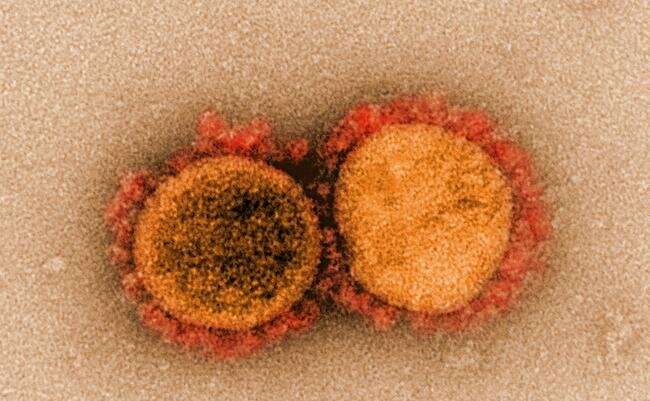Scientists uncover four new facts about early SARS-CoV-2 infections

University of Minnesota Medical School researchers studied SARS-CoV-2 infections at individual cellular levels and made four major discoveries about the virus, including one that validates the effectiveness of remdesivir—an FDA-approved antiviral drug—as a form of treatment for severe COVID-19 disease.
"Since the start of the COVID-19 pandemic, the way that each individual responds differently to the infection has been closely studied. In our new study, we examined variations in the way individual cells reacted differently to the coronavirus and responded to antiviral treatment," said Ryan Langlois, Ph.D., senior author of the study, associate professor in the Department of Microbiology and Immunology and member of the Center for Immunology at the U of M Medical School.
The study, published in the journal PLOS Pathogens, found that:
- SARS-CoV-2 primarily infects two types of cells in the upper respiratory tract—ciliated cells and goblet cells;
- Goblet cells are the main producer of pro-inflammatory responses, which are common in severe COVID-19 cases;
- Remdesivir, however, is effective in blocking virus replication in all cell types in the upper respiratory tract;
- SARS-CoV-2 is highly effective at evading initial detection by the innate immune system, but when detected, virus replication is efficiently blunted by antiviral responses.
"Understanding early events in virus-host interactions is critical for understanding the pathophysiology of the disease as well as for identifying appropriate antiviral and immunomodulatory drugs," Langlois said. "Our results show that ciliated airway epithelial cells are the predominant cell type initially infected by SARS-CoV-2, and importantly, that remdesivir is capable of reducing viral replication in all infected cell types within this culture system."
The diverse population of cells lining the human airway, called "airway epithelium," is the very first line of defense against COVID-19 and can set the stage for immune responses that either protect against disease or cause damage. Using a cutting-edge technique that comprehensively measures reactions by single cells, Langlois' team discovered that SARS-CoV-2 is capable of infecting most cell types in the human airway and identified a key gene required for viral entry.
"As expected, we observed a large amount of variation between different cells in the antiviral immune response, paving the way for future studies that will better characterize why some individuals are relatively protected against severe COVID-19 disease," Langlois said.
More information: Jessica K. Fiege et al, Single cell resolution of SARS-CoV-2 tropism, antiviral responses, and susceptibility to therapies in primary human airway epithelium, PLOS Pathogens (2021). DOI: 10.1371/journal.ppat.1009292





















